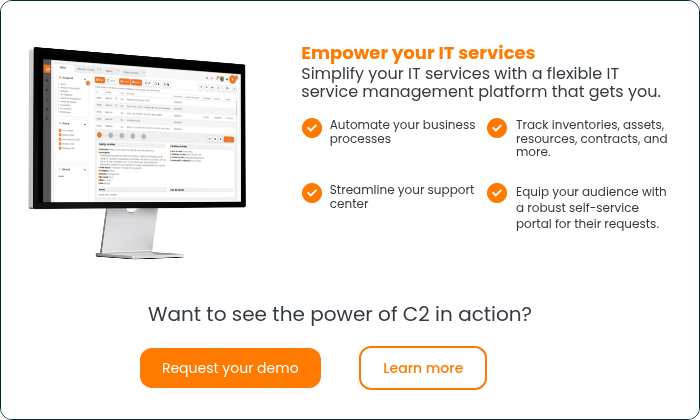Even if you have used your ITSM solution for some time, it doesn’t mean you can’t make room for some adjustments. In life, there’s always room for improvement because it is never too late to apply best practices.
Here are some tips for optimizing your service desk tool
1. Proper use of KPI and reports
Getting caught up in creating numerous reports and dashboards and chasing after numbers is easy, but it's crucial to pause and reflect on what data truly matters for your team and superiors. A concise report that delivers only the essential information for your customers holds more value than a lengthy report filled with irrelevant numbers. It's never too late to reassess the statistics previously shared by the company. Identify the truly beneficial ones, prioritize them, and dedicate the necessary time for thorough analysis.
Remember to share these reports with your customers; enhancing their experience should be at the forefront of your priorities.
2. Process of continuous improvement
IT organizations that integrate the process of continuous improvement of their services in their corporate culture have a huge advantage over those who simply continue working the way they always have. Contrary to popular belief, continuous improvement should not be big and bulky.
You can, for example, create a process diagram on a piece of paper and list all your activities or, even better, take the time to do this as a team. Create the process diagram on a large board so that everyone can take part in the process. Next, examine each process activity and ask yourself a series of simple questions:
- Is this activity really necessary?
- Does this activity create value for your customers?
- Can this activity be optimized?
- Can this activity be stopped without compromising anything?
When you have adequately responded to these four questions, it would be to your advantage to either:
A. Cease operations with no added value.
When conducting a review process, we always find activities people perform in habit. Eliminating activities that do not create value is a great way to improve efficiency, reduce the cost of operations and accelerate ITSM processes.
B. Optimize your process with new application features
Take the opportunity to get up to date with the latest updates. Apply them to your system. These improvements will likely increase the incident and change management automation processes.
3. Availability management a priority
Most companies say that they have not established a process for availability management, but if you ask the right questions, you will learn that they have:
- The cons-measures, such as network connections doubled to ensure that current hardware failures do not cause catastrophic service outages.
- Data replication and backups to ensure they can compensate for data loss or corruption.
- The minutes of availability of servers and applications, sometimes even service availability reports lived by their users.
All this forms a good basis for more formal availability management processes, which can really help to ensure the satisfaction of your customers’ expectations. Frequently, only the checklists and assignment of responsibility for considering all possible risks and ensuring that all appropriate measures are taken are missing.
4. Actualise your certification
Improving and deepening your knowledge and professional and personal qualifications should always be a priority. Maybe you have never taken the time to complete it. If you take the time to update your knowledge, you are now in full control of your means and your skills, and your customers will benefit as much as you.
Take your time, ask the right questions, and focus your energy on the right places, and you will leave your customers and win that year. If ever you come to a dead end, remember that we are at your disposal to help you with this optimization.






